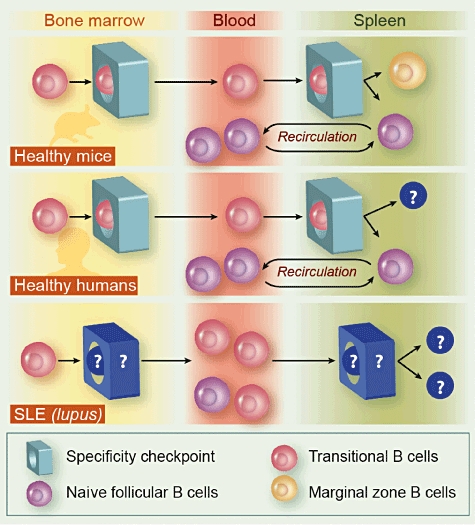Fig. 1.

Specificity checks for transitional B cells in mice and humans. In mice, transitional B cells emerge from the bone marrow, where they need to pass their first specificity check. They enter the spleen and after further checks they enter the marginal zone or reside in the splenic follicles as naive follicular B cells. The latter can circulate between blood and lymphoid tissues. In humans, the second check-point is less well understood. Although it is believed that it lies within the spleen, there is little evidence for this in humans. The maturation of transitional cells into marginal zone B cells that have mutated immunoglobulin variable region genes normally indicative of germinal centre transit is uncertain. Patients with systemic lupus erythematosus (SLE) have an increased proportion of autoreactive B cells which presumably have not been checked for specificity. Although the defective check-point is unknown, it has been observed that transitional B cells emerge from the bone marrow and accumulate in the blood in SLE constituting a relatively large proportion of blood B cells. Whether a further maturation defect lies in the spleen or elsewhere remains unknown.
